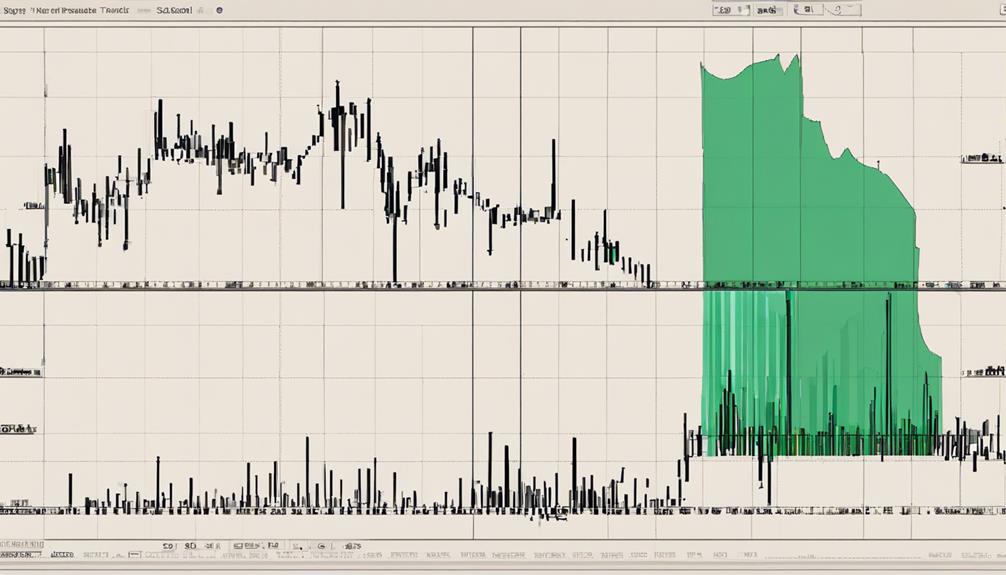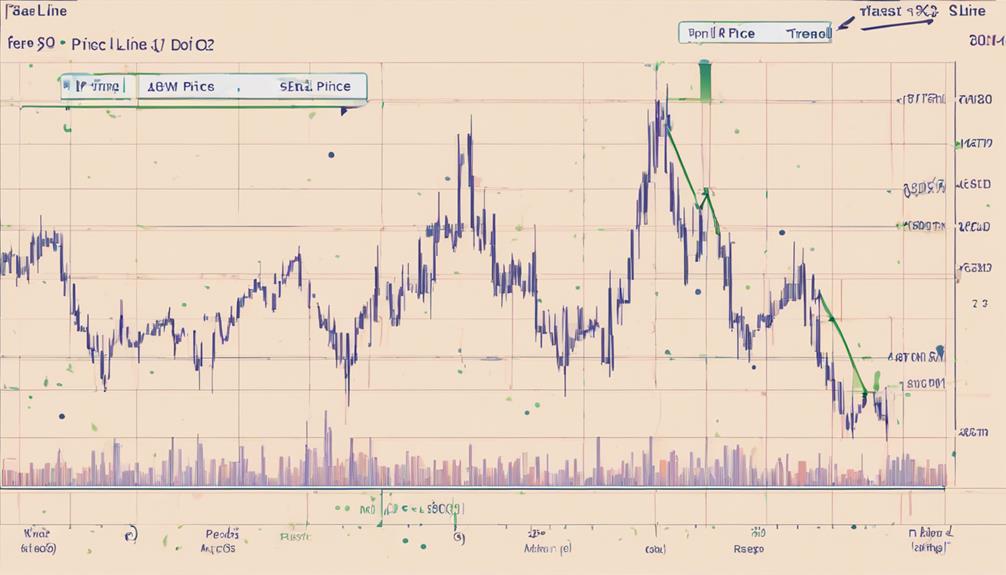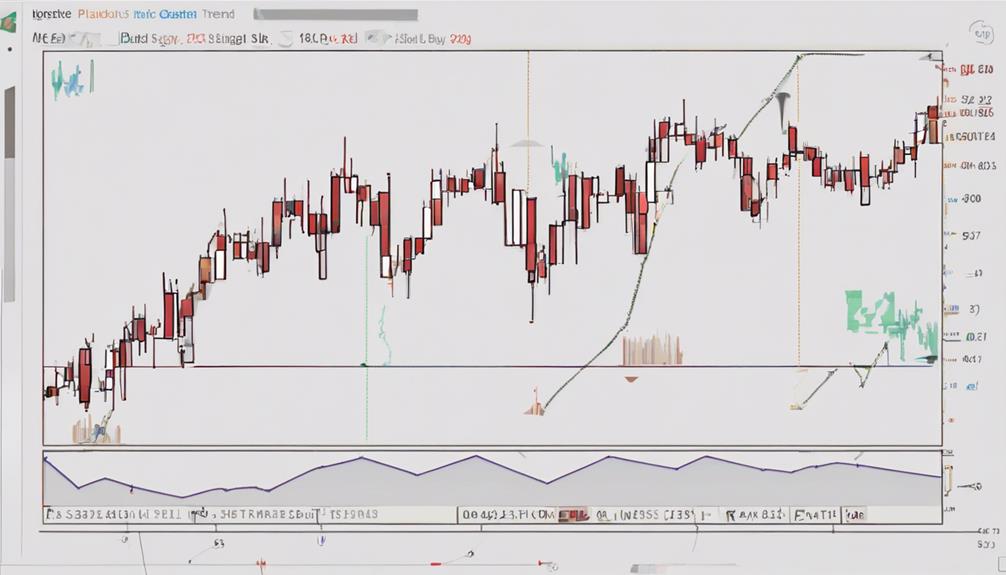In the realm of technical analysis, the Parabolic SAR indicator stands as a key tool for traders seeking to navigate market trends and potential reversals. Its intricate calculation methodology and dynamic nature offer a unique perspective on price movements, but mastering its nuances requires a strategic approach.
As we delve into the intricacies of Parabolic SAR analysis, we uncover not just its theoretical underpinnings but also its practical applications in real-time trading scenarios. Join us on this journey of unraveling the complexities and uncovering the hidden potential of the Parabolic SAR indicator in shaping your trading decisions.
Understanding Parabolic SAR Indicator
The Parabolic SAR indicator, a creation of J. Welles Wilder in the 1970s, serves as a dynamic tool for traders seeking to identify potential trend reversals in financial markets. The acronym SAR stands for Stop and Reverse, reflecting its function in signaling possible trend shifts.
This technical indicator utilizes a parabolic curve that places dots either above or below price bars to indicate the direction of the trend. J. Welles Wilder Jr. developed this tool to help traders identify the trend direction and potentially enter or exit positions accordingly.
How Parabolic SAR Works

Utilizing a dynamic trailing stop and reverse method, the Parabolic SAR indicator employs dots positioned above or below price bars to indicate trend direction. When dots appear below price bars, it suggests an upward trend, while dots above indicate a downward trend. This mechanism assists traders in setting trailing stop-loss orders and making informed trading decisions based on the indicator's signals and price movements.
Parabolic SAR is particularly effective in trending markets, aiding traders in capturing high-momentum moves and facilitating timely exits. However, it is essential to note that the indicator may produce false signals in sideways or ranging markets, emphasizing the importance of using additional confirmation indicators when incorporating Parabolic SAR into trading strategies.
Interpreting Parabolic SAR Signals

In the context of technical analysis, interpreting Parabolic SAR signals involves deciphering the shifts in dot positions relative to price bars to gauge potential trend reversals and signal buy or sell opportunities. Here are key points to consider:
- Trend Reversal Signals: The Parabolic SAR signals a potential trend reversal when the dots switch positions, moving from above to below price bars for an uptrend reversal and vice versa for a downtrend reversal.
- Buy and Sell Signals: Buy signals are generated when the dots are below the price bars, indicating a bullish trend, while sell signals occur when the dots are above the price bars, signaling a bearish trend.
- Trend Confirmation: Three consecutive parabolas appearing on the opposite side of the price bars confirm a potential trend reversal, providing a stronger indication of a shift in market direction.
- Trend Momentum and Entry/Exit Points: The slope of the dots reflects trend momentum, assisting traders in identifying optimal entry and exit points within trending markets, as well as setting trailing stops to capture potential profits and protect against significant losses.
Implementing Parabolic SAR in Trading

Implementing Parabolic SAR effectively in trading requires a comprehensive understanding of its signals and strategic application within market dynamics. Traders typically place buy orders when the dots are below price bars, indicating an uptrend, and sell orders when the dots are above, signaling a downtrend.
The confirmation of trend reversals occurs when three consecutive parabolic dots form on the opposite side of the price bars, providing valuable insights for potential trend shifts. Utilizing Parabolic SAR helps traders capture trend movements in lasting trends and set trailing stops based on the indicator's levels.
The slope of the parabolic dots reflects trend momentum, offering traders optimal entry and exit points in trending markets. By incorporating Parabolic SAR with other indicators, traders can enhance their trading strategies, leading to more accurate trade decisions. This integration helps in confirming trend reversals and identifying suitable opportunities for entering and exiting trades efficiently.
Advanced Strategies With Parabolic SAR

Employing advanced strategies with the Parabolic SAR indicator involves integrating it with complementary technical tools such as moving averages and RSI to enhance signal accuracy and trading insights. Here are four key strategies for utilizing Parabolic SAR effectively:
- Dynamic Trailing Stop-Loss Orders: Traders can use Parabolic SAR to set dynamic stop-loss orders that adjust based on price movements and trend directions, helping to secure profits and limit potential losses.
- Combining with MACD: By combining Parabolic SAR with indicators like MACD, traders can confirm potential trend reversals and identify optimal entry points with higher confidence.
- Fine-Tuning Parameters: Advanced users can adjust the acceleration factor and step parameters of Parabolic SAR to customize the indicator's sensitivity to price changes, aligning it more closely with specific trading strategies.
- Integration with Candlestick Patterns: Utilizing Parabolic SAR in conjunction with candlestick patterns can provide a deeper understanding of market sentiment and potential price movements, enhancing overall trade analysis.
Can You Provide Practical Examples of Parabolic SAR Indicator Analysis in Your Guide?
In our guide, we illustrate understanding parabolic SAR indicator through practical examples. Using historical price data, we demonstrate how this indicator can help identify potential trend reversals and determine optimal entry and exit points in various trading scenarios.
Frequently Asked Questions
How Do You Read a Parabolic SAR Indicator?
Reading a Parabolic SAR indicator involves interpreting the dots' positions relative to price bars. Dots below bars signal an uptrend, above bars indicate a downtrend. A shift from above to below suggests a trend reversal. Traders utilize SAR for trend analysis and setting stop-loss orders.
What Is the Best Strategy for Parabolic Sar?
The best strategy for Parabolic SAR involves combining it with complementary indicators to confirm signals. Adjusting AF and step for asset volatility enhances effectiveness. Traders employ Parabolic SAR for setting trailing stop-loss orders to secure profits during trends.
How Accurate Is the Parabolic SAR Indicator?
The accuracy of the Parabolic SAR indicator varies depending on market conditions, asset characteristics, and the chosen time frame. While it excels in trending markets, caution is advised in choppy or sideways conditions where false signals may occur.
What Time Frame Works Best for Parabolic Sar?
The ideal timeframe for Parabolic SAR depends on trading style and objectives. Shorter timeframes like 15-minute or 1-hour charts suit day trading, offering more signals but potentially more false ones. Longer timeframes such as daily or weekly charts are better for swing trading due to fewer signals but higher potential accuracy. Experimentation with different timeframes and settings is key to determining the most effective approach.
Conclusion
In conclusion, despite the Parabolic SAR indicator's reputation for guiding traders in trend analysis and reversals, its limitations and reliance on market conditions can lead to mixed results. Traders must carefully assess its signals, combine it with other indicators for validation, and adapt their strategies accordingly.
The irony lies in the indicator's dual nature of offering valuable insights while also posing challenges that require vigilance and adaptability for successful trading outcomes.
